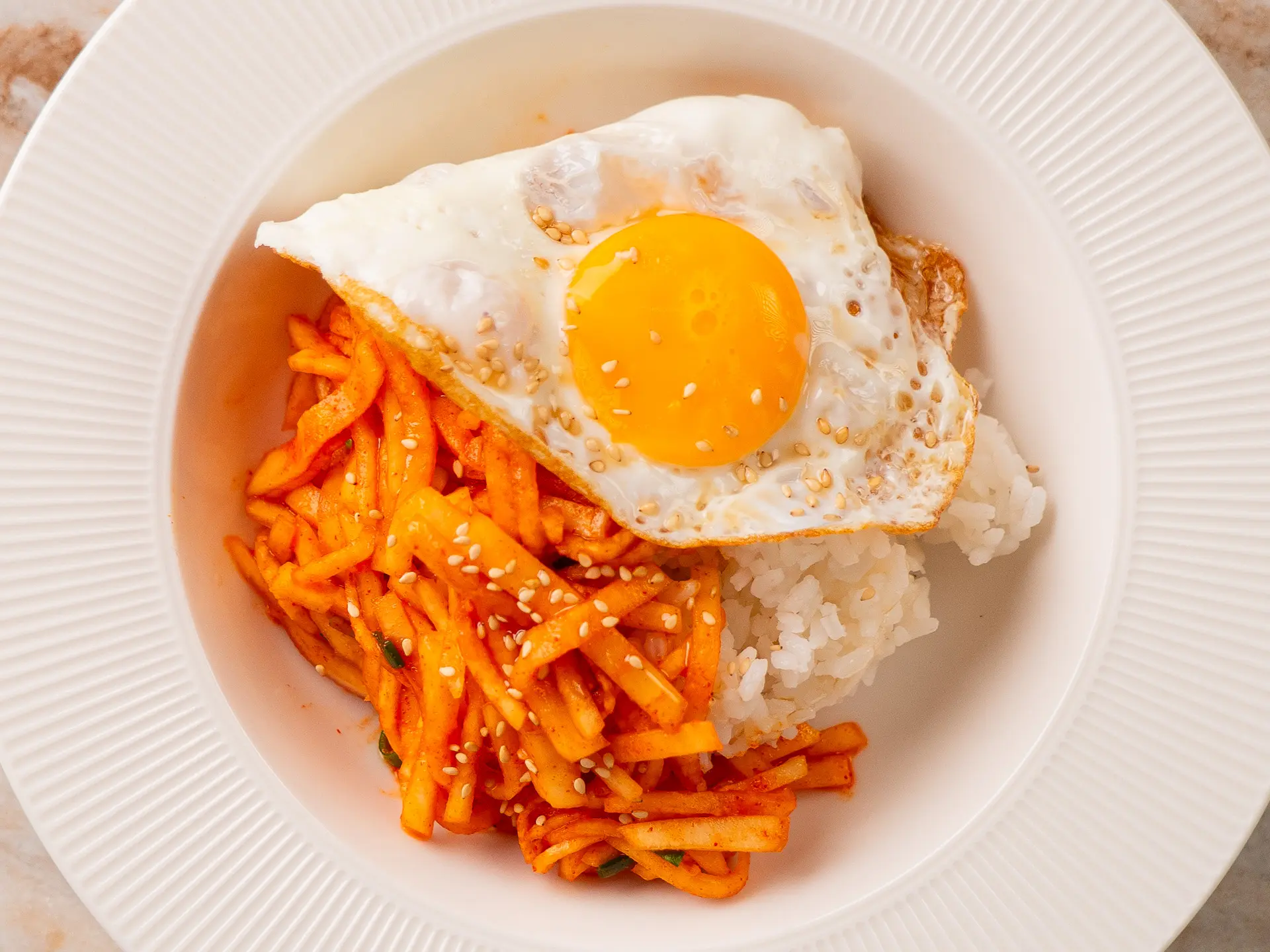
Musaengchae Bibimbap - Korean Spicy Radish Salad
440kcal
Ingredients
- 500 g radish (asian radish)
- 0.5 tsp salt
- 2 tbsp sugar
Seasoning
- 2.5 tbsp gochugaru (Korean chili powder)
- 2 tbsp vinegar
- 2 tbsp Korean fish sauce
- 1 tbsp plum syrup
- 1 tbsp minced garlic
- 0.5 stalk green onion
Bibimbap
- 1 bowl rice
- 1 fried egg
- 60 g spicy radish salad
- 1 tbsp sesame oil
- 1 pinch sesame seeds
Method
- Wash the radish thoroughly, then peel the skin using a potato peeler.
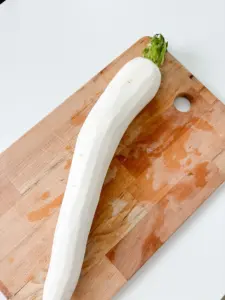
- Julienne the radish into thin strips.
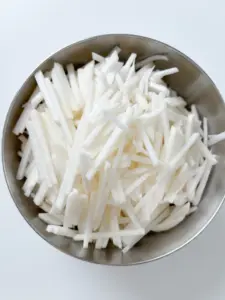
- In a mixing bowl, add the radish with salt (0.5 tsp) and sugar (2 tbsp). Let it sit for 10 minutes to soften.
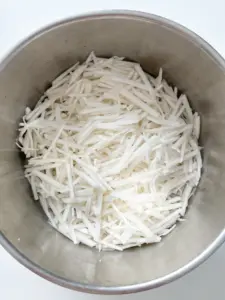
- Thinly slice 1/2 green onion.
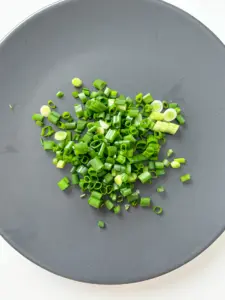
- Do not discard the water released from the radish. Add gochugaru (2.5 tbsp), vinegar (2 tbsp), fish sauce (1.5 tbsp), plum syrup (1 tbsp), and minced garlic (1 tbsp) to the radish. Mix well.
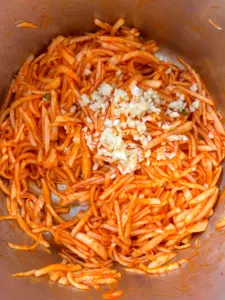
- Add the sliced green onion and gently mix again.

- Musaengchae 무생채
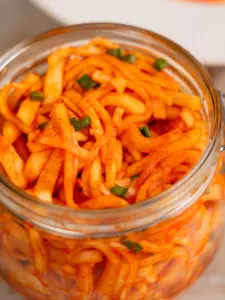
Assembling the Bibimbap
- Fry an egg sunny-side up in a frying pan.
- Place cooked rice in a bowl. Top with 60g of mu saengchae and the fried egg.
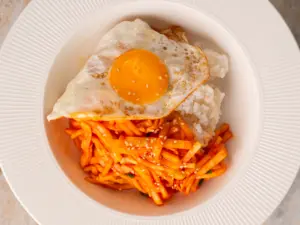
- Drizzle with 1 tbsp sesame oil and sprinkle toasted sesame seeds on top.
